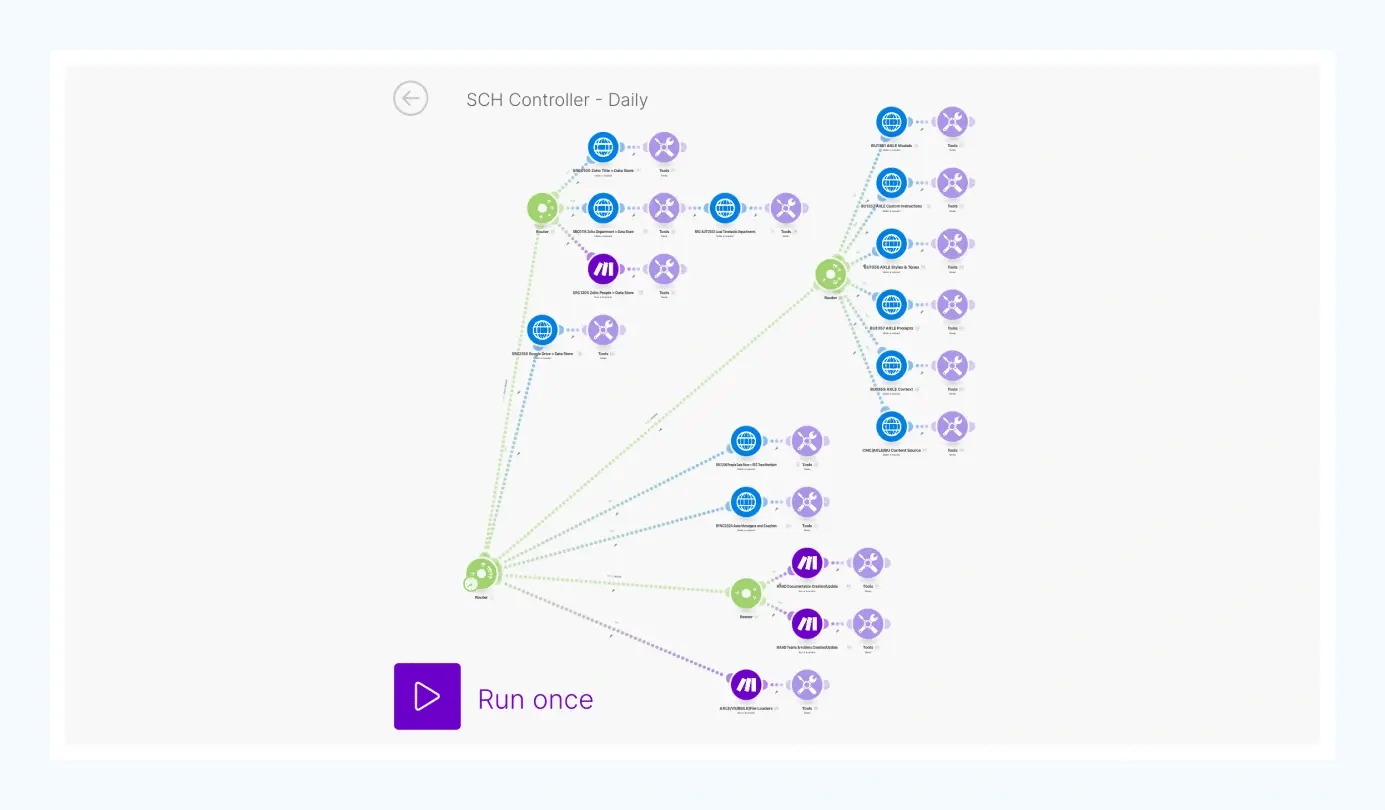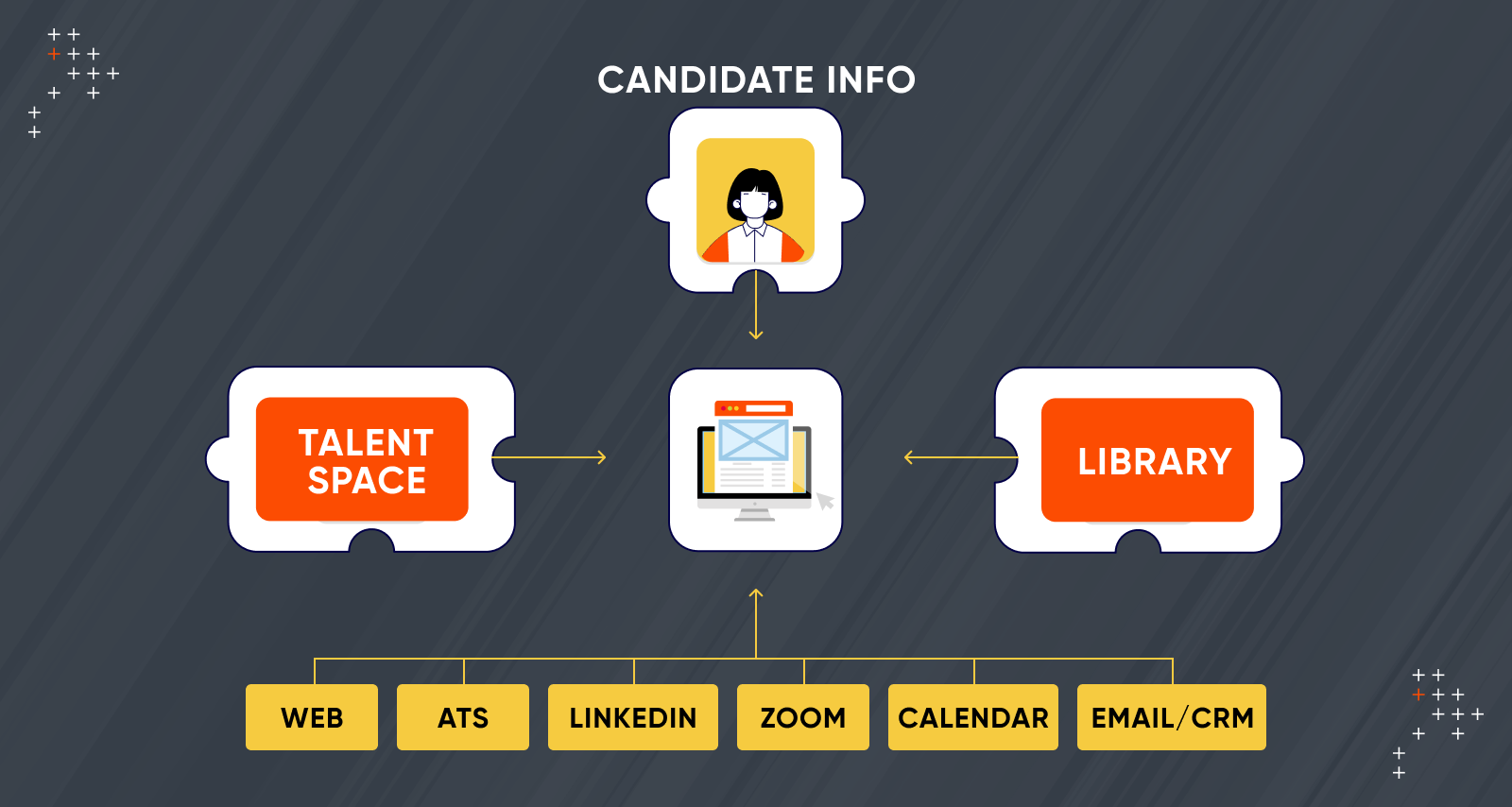Today's work environment is highly competitive, with rapidly evolving technology and consumer demand. This dynamic creates constant workplace pressure, especially when there's a need to offer differentiated products.
The Boston Consulting Group reports that business complexity has increased six-fold since the 1950s. A State of Work report reveals that only 43% of our workweek is spent on core job functions.
There's a need for change. While change brings challenges, it also opens opportunities.
Intelligent automation (IA) offers a solution by streamlining processes, freeing resources, and boosting efficiency. For instance, manufacturers use IA to accelerate production, and insurers automate compliance tasks. Learn more about Intelligent Automation at Axelerant.
This led us to consider: What if our automation team reduced their workloads by coordinating recurring tasks? Wouldn't they be better equipped to help all other departments become more efficient?
Understanding Recurrent Tasks
Recurrent tasks are performed multiple times with specific steps each time. For our IA team, these tasks include data entry, report generation, and routine maintenance. These involve gathering information from systems like Zoho People and Timetastic and putting it into a central repository.
Traditional ETL (extract, transform, load) methods required significant human intervention. Engineers and developers spent hours writing scripts, managing data quality, and troubleshooting errors. This manual approach was time-consuming and prone to errors. Automating these processes can significantly improve efficiency and accuracy.
Automation For IA Teams
Automation uses technology to streamline data management and reduce manual tasks. It handles repetitive jobs like data ingestion, transformation, validation, and loading, eliminating the need for manual inputs. This saves time and minimizes errors. The goal is to create an efficient data pipeline from various sources to its destination, such as a dashboard or analytics tool. Automating these processes allows human experts to focus on higher-value tasks, enhancing job satisfaction and overall contributions.
Managing Automation Workloads At Axelerant
At Axelerant, our IA team manages various daily and weekly tasks. We focused on automating "set it and forget it" tasks like data entry, report generation, and system maintenance. This allowed us to concentrate on strategic, high-impact work. Explore our approach to automating project planning.
Why Was Automation The Solution?
Automation was crucial for efficient workload management. It enabled real-time processing and event-driven triggers, ensuring tasks were completed based on specific actions. This approach, beyond traditional scheduling, reduced manual intervention and minimized errors.
How Did The Automation Team Achieve This?
- Identifying Tasks: We started by pinpointing time-consuming, manual, or error-prone activities.
- Assessing Automation Potential: We chose tasks that, when automated, would have the maximum impact on our efficiency.
- Mapping Coordination: We mapped out how these tasks could be coordinated to produce meaningful results.
- Exploring Automation Solutions: We explored various automation tools, prioritizing compatibility with our existing tech stack, scalability, and user-friendliness. We chose Make for its robust features and ease of use.
A Coordinated Make Rundown
SCH Controller - Daily orchestrates a series of Make.com scenarios each morning, starting at 4:30 AM IST. It handles critical tasks such as data transfers via HTTP requests, scenario orchestration, and precisely timed delays, all centered around Zoho People, Timetastic, Google Drive, and Axlebot applications.

The process begins with the SCH Controller - Daily initiating scenarios in a specific sequence. Delays between these calls allow time for data to be sourced, aligned, updated, synchronized, and consolidated into a central repository. This ensures that subsequent scenarios depend on this data and can run smoothly and without errors.

SCH Controller - Daily extracts changes in employee data and updates managerial, trainer, and coach relationships. It then consolidates this information into a central repository, ensuring all systems are aligned with the latest updates.

It then backs up Make Data Stores related to content creation, ensuring an extra layer of security.
Finally, it updates documentation for any changed Make scenarios and refreshes the OpenAI vector stores used by Axlebot, our Slack-based AI chatbot.

SCH Controller - Daily completes its tasks within a 45-minute window. Afterward, other scenarios that don't require strict sequencing run between 5:30 AM and 7:00 AM IST.
Since some interim scenarios further alter team member relationships or make other changes, SCH Controller - Daily II runs at 7:30 AM IST to ensure all updates are captured and centralized for other uses.

SCH Controller - Daily II manages daily operations by executing specified scenarios with a designed delay mechanism to control workflow timing. It updates personnel information and captures Make Scenario Consumption data for auditing.
For weekly operations that require sequencing, SCH Controller - Weekly handles these tasks efficiently.

̉While the above recurring scheduler works well; we're transitioning to using Make's Run Scenario module instead of non-authenticated HTTP Requests to enhance security and robustness. This module bypasses the webhook connection delays, uses authentication, and allows the passing of configuration information.

The Impact Created
- Increase in high-impact work: Automating extract, transform and load recurring tasks freed up valuable time for administrative and automation teams, allowing them to focus on high-impact projects
- Time saved: Efficient scenario execution saves about 3 hours daily for the organisation.
- Costs saved: Automation helped cut operational costs and optimize resource allocation by minimising manual work and errors.
- Reduced manual work: Automation handled routine tasks seamlessly, minimizing the need for manual intervention and increasing overall efficiency. As we reach version 3 of automation, we’re removing manual tasks, keeping dynamic updates seamless, and making it easier to manage changes directly in applications like Zoho People instead of Google Sheets.
Conclusion
The future of enterprise workload automation will prioritize support for hybrid and multi-cloud environments of all types. It will provide deeper operational insights, centralized control, advanced file transfer, and robust security features. Expect increased scalability and the integration of predictive analytics, using machine learning to anticipate and address potential issues before they occur, regardless of whether they are in the cloud or on-premises.
At Axelerant, we leverage workload automation to centrally and seamlessly automate business processes across diverse environments and existing solutions. This approach offers our clients streamlined and cohesive automation, driving operational efficiency and supporting growth.
Have questions? Leave us a comment below!

Michael Cannon, Director of Intelligent Automation
Living remotely in Taiwan with 4 incredible sons, 3 playful cats, and one fiery partner. As Director of Intelligent Automation @Axelerant, they are dedicated to building trust in Axelerant as your go-to agency partner through their journey in #Automation, #Empowerment, and #Productivity.

Saakshi Dutta, Marketing Associate
A free-spirited and eccentric explorer, Saakshi brings fresh perspectives to every endeavor—continually looking up at the stars and pushing boundaries. She is passionate about photography, filmmaking, and trekking, always eager to discover new places and tell stories that often go unheard.

 We respect your privacy. Your information is safe.
We respect your privacy. Your information is safe.




Leave us a comment